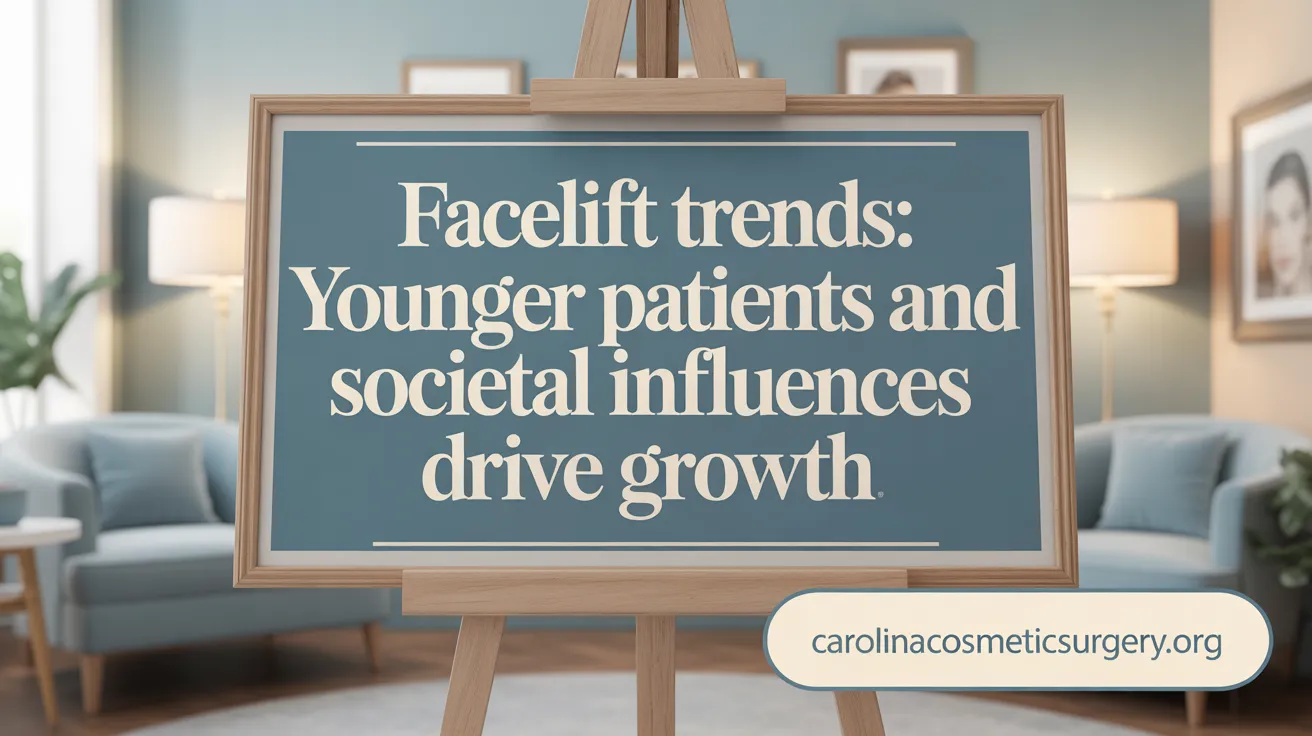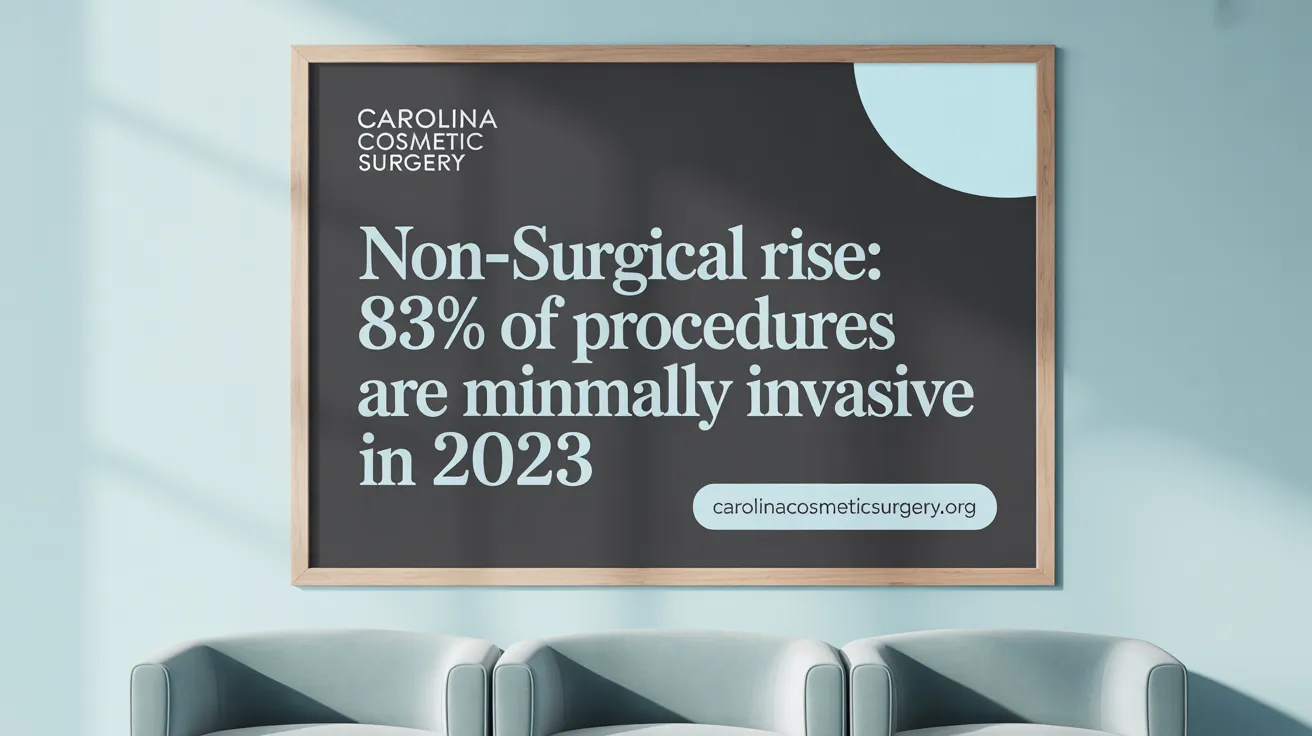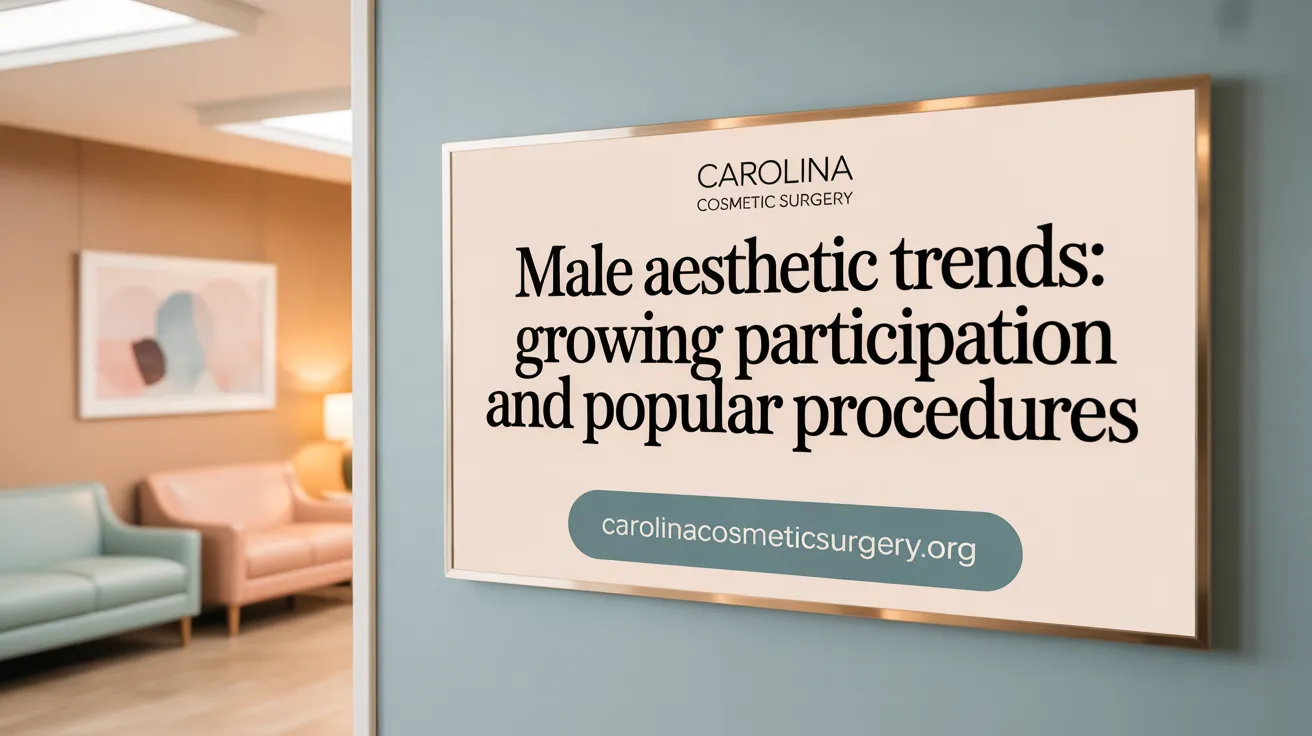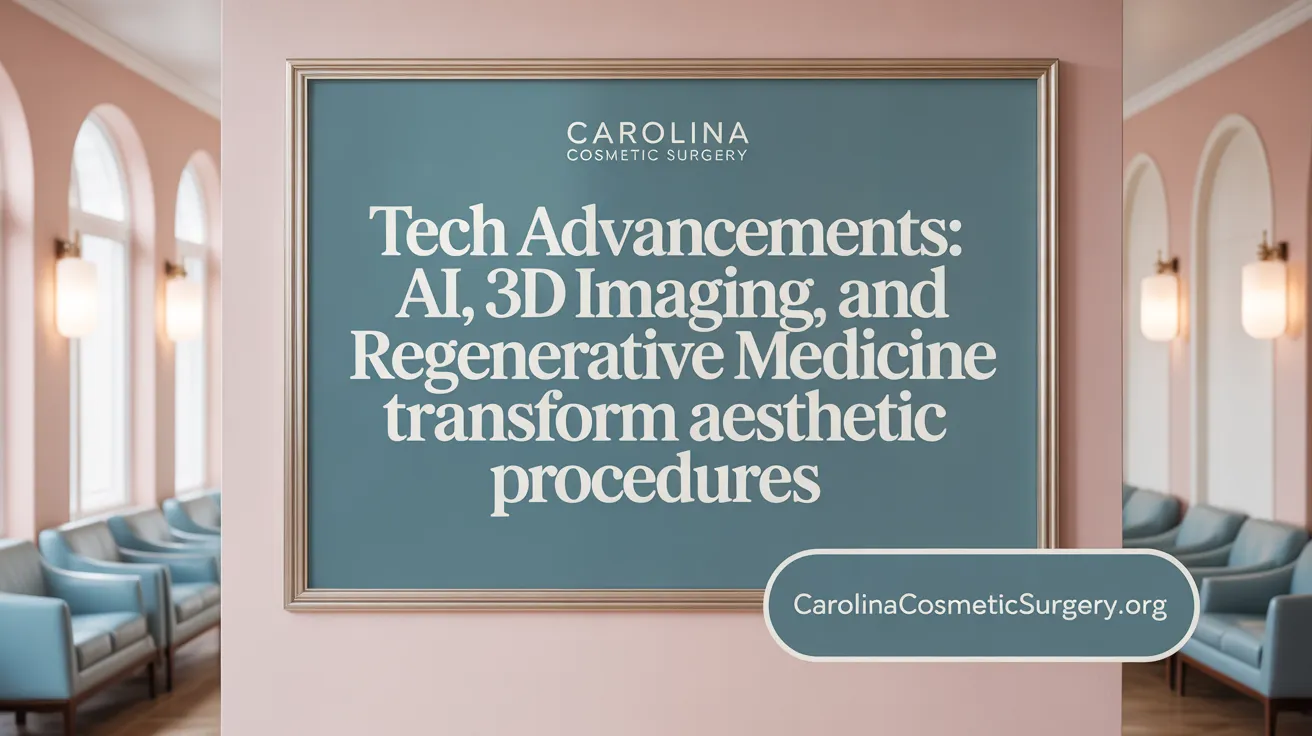Understanding a Decade of Change in Aesthetic Surgery
Over the past ten years, the field of aesthetic surgery has undergone remarkable evolution, marked by dramatic shifts in procedure popularity, patient demographics, technological advancements, and market growth. This article explores the fascinating trends shaping aesthetic surgery from emerging minimally invasive treatments to the resurgence of surgical interventions like facelifts, highlighting the statistical data and innovations that have defined the last decade.
<!-- VIDEO:eyJsaW5rIjoiaHR0cHM6Ly93d3cueW91dHViZS5jb20vd2F0Y2g/dj1Jb0k5N3ZPYVRWZyIsImltYWdlVXJsIjoiaHR0cHM6Ly9lbmNyeXB0ZWQtdGJuMC5nc3RhdGljLmNvbS9pbWFnZXM/cT10Ym46QU5kOUdjVHJ0RFJpZ1pCUTdMWGtJb2ZBaFZETndUUVE1ZzhwSFRWWTMyTVI5MEtuQmZKWnNMUmVGMUstMVVVdnNSUXomcyZlYz03MzA4NjE0MSIsInRpdGxlIjoiVG9wIDEwIEFlc3RoZXRpYyBUcmVuZHMgaW4gMjAyNSBmcm9tIGEgUGxhc3RpYyBTdXJnZW9uIHwgRHIgLi4uIiwic25pcHBldCI6IkRpc2NvdmVyIHRoZSBmdXR1cmUgb2YgYWVzdGhldGljcyBhbmQgcGxhc3RpYyBzdXJnZXJ5ISBJbiB0aGlzIHZpZGVvLCBib2FyZC1jZXJ0aWZpZWQgcGxhc3RpYyBzdXJnZW9uIERyLiBSb3kgS2ltIHJldmVhbHMgdGhlIHRvcCA1IHRyZW5kcyAuLi4ifQ== -->Aesthetic Surgery Key Facts
- Approximately 90% of surgeons perform facelifts annually with a steady increase in procedures.
- The average age of facelift patients is trending younger, with a 26-32% rise in those aged 35-55.
- In 2023, 83% of all facial aesthetic procedures were minimally invasive, primarily neurotoxins and dermal fillers.
- Liposuction remains the leading surgical procedure, with over 2.2 million cases in 2023.
- Breast augmentation had over 249,000 cases in 2023, with a high incidence among women aged 18-34.
- Male participation in aesthetic procedures is growing steadily, with 92% of surgeons reporting male patients.
- Advancements such as AI, 3D imaging, and regenerative medicine are significantly improving surgical outcomes.
- The global cosmetic surgery market is projected to reach $201 billion by 2031, driven by societal acceptance and technology.
- Younger generations, especially Gen Z, focus on early maintenance with non-invasive treatments like Botox and fillers.
- Future trends include regenerative therapies, gender-inclusive treatments, and digital virtual clinics for more personalized care.
1. Surge in Facelift Procedures Amid Changing Patient Profiles

Increase in Facelift Frequency
Over the past few years, there has been a notable rise in facelift procedures among patients. Data indicates that nearly 90% of AAFPRS surgeons perform facelifts annually, with the number of procedures steadily climbing each year.
Younger Average Facelift Patients
Interestingly, the average age of patients seeking facelifts is trending younger. An increase of approximately 26-32% has been observed in patients aged 35 to 55, with more younger adults in their late 30s and early 40s opting for this procedure.
Resurgence Due to Weight Loss Trends
One of the driving factors behind the facelift revival is recent weight loss phenomena, including the popular use of medications like Ozempic. Rapid weight reduction often results in sagging skin, making facelifts a desirable option for skin tightening.
Popularity Among Women
Women continue to be the primary demographic requesting facelifts, along with other facial rejuvenation procedures such as rhinoplasties and eyelid surgeries. The trends reflect a societal shift towards maintaining a youthful appearance while embracing natural results.
| Aspect | Data & Trends | Additional Notes |
|---|---|---|
| Surge in Procedures | 90% of surgeons perform facelifts annually | Steady year-over-year increase |
| Patient Age | Younger patients increasingly seeking facelifts | 26-32% rise in 35-55 age group |
| Influencing Factors | Weight loss trends, societal beauty standards | Medications like Ozempic contributing |
| Gender Focus | Majority are women, but men's interest rising | Top procedures for men include eyelid and rhinoplasty |
2. Minimally Invasive Procedures Dominate the Aesthetic Surgery Landscape

What percentage of minimally invasive procedures were performed?
In 2023, approximately 83% of all facial aesthetic procedures were minimally invasive. This reflects a clear preference among patients for treatments that are less invasive with quicker recovery times.
Which treatments are most common?
Neurotoxins such as Botox and dermal fillers continue to lead the way in minimally invasive options. These treatments are highly popular for their ability to reduce wrinkles, add volume, and rejuvenate the skin.
Are certain age groups more inclined towards non-surgical treatments?
Most patients under 34, about 89%, opt for minimally invasive procedures. Younger individuals favor non-surgical options to maintain a youthful appearance and address early signs of aging.
Is there a trend towards early maintenance?
Yes, Generation Z (ages 11-26) is increasingly focusing on early aesthetic care. They pursue preventive and maintenance treatments, emphasizing natural results and minimal downtime.
This shift toward non-invasive treatments highlights their growing popularity, driven by technological advancements and changing societal attitudes towards aesthetic procedures.
3. Evolving Popularity of Key Surgical Procedures: Liposuction and Breast Augmentation

Liposuction: The Leading Surgical Choice
Liposuction continues to reign as the most common surgical procedure worldwide and in the United States, with over 2.2 million cases performed in 2023. It also holds the top spot in many regions, offering an effective way to target stubborn fat deposits resistant to diet and exercise.
Trends in Breast Augmentation
Breast augmentation has remained a favored procedure since 2006, involving both implant use and fat transfer. In 2023, the procedure marked a significant presence with over 249,000 cases. While globally women mostly seek and undergo these enhancements, the procedure's popularity extends across various age groups, especially 18-34, where over half of the surgeries occur.
Regional Variations in Popularity
Globally, the United States leads in breast augmentations and liposuction, with Brazil close behind in both categories. Iran is notable for its high rhinoplasty rates, and Mexico attracts many international patients for affordable cosmetic surgeries including breast and liposuction procedures. These regional trends reflect economic factors, healthcare access, and cultural preferences.
Gender-Specific Preferences
Women overwhelmingly prefer procedures like liposuction and breast augmentation, with women making up about 85.7% of all aesthetic surgeries. Men, however, favor eyelid surgery, liposuction, and gynecomastia, highlighting distinct aesthetic goals between genders.
4. Rising Male Engagement in Aesthetic Surgery

How is the number of men undergoing aesthetic procedures changing?
The participation of men in cosmetic surgery is growing steadily. In 2023, 92% of surgeons reported male patients in their practice, reflecting a broader societal acceptance.
What are the most common procedures among men?
Among men, the most popular treatments include blepharoplasty, rhinoplasty, and facelifts. These procedures help address aging signs and improve facial features while maintaining a natural look.
Are non-surgical treatments popular among men?
Yes, non-invasive options such as Botox and dermal fillers are increasingly chosen by men. These treatments are favored for their quick results and minimal downtime.
What are the trends regarding gender diversification?
The industry is seeing a shift towards gender-neutral treatments. More young men under 35 are pursuing both surgical and non-surgical enhancements, signifying a move toward broader demographic inclusion.
| Aspect | Details | Additional Insights |
|---|---|---|
| Male Patient Growth | Increasing number over recent years | Looks to continue rising, making male procedures a focus area |
| Top Procedures | Blepharoplasty, rhinoplasty, facelifts | Popular for rejuvenation and aesthetic refinement |
| Non-surgical Treatments | Botox, fillers | Less invasive, with growing acceptance |
| Gender Trends | More young men seeking enhancements | Reflects changing societal attitudes toward male aesthetic care |
5. Impact of Technological Innovations on Surgical Techniques and Outcomes

AI and 3D imaging in procedure planning
Recent advances in artificial intelligence and 3D imaging have significantly improved surgical planning and patient outcomes. These technologies enable surgeons to visualize procedures in detail before actual surgery, allowing for more precise, customized results. Enhanced imaging helps in predicting postoperative appearance and tailoring procedures, which leads to higher patient satisfaction.
regenerative medicine and exosome therapies
Regenerative medicine is transforming aesthetic treatments with promising therapies like platelet-rich plasma (PRP) and exosome-based treatments. These approaches utilize the body’s own regenerative capabilities to rejuvenate skin and tissues, fostering faster healing and natural results. About 57% of practitioners expect notable growth in this area, with many predicting that exosomes could become central to future treatments.
robotic-assisted surgery advances
Robotic-assisted surgical systems are beginning to play a role in aesthetic procedures, especially in highly precise operations like facial reconstruction and liposuctions. These systems enhance surgeon control, minimize risks, and improve recovery times. As robotic technology advances, it is anticipated to become a standard part of cosmetic surgery, extending precision and safety.
minimally invasive technology developments
Most procedures today are minimally invasive, with about 83% involving neurotoxins, fillers, or topical treatments. Innovations in these technologies continue to push the boundaries, offering less discomfort, quicker recovery, and more natural-looking results. Continuous improvements in injectables and non-surgical devices are driving this shift, making aesthetic enhancements more accessible and appealing.
6. Steady Market Growth Fueled by Societal Shifts and Medical Tourism
The global cosmetic surgery industry continues to expand steadily, with a market value projected to reach approximately $201 billion by 2031. This growth is driven by rising societal acceptance, technological advancements, and an increase in demand across diverse demographics.
Social media and societal acceptance play significant roles in normalizing cosmetic procedures, influencing younger generations' willingness to pursue aesthetic enhancements. Platforms showcasing natural, youthful results have created a cultural shift, making aesthetic treatments more mainstream.
Medical tourism hotspots like Brazil, Mexico, and Dubai have contributed greatly to the industry’s expansion. Countries offering affordable yet high-quality procedures attract international patients, boosting local economies and advancing surgical innovation.
Economic factors also fuel market growth. The decreasing cost of procedures, alongside increased access to care and insurance options, encourages more individuals to consider aesthetic surgery. As a result, worldwide procedures increased by 3.4% in 2023, emphasizing ongoing demand.
| Aspect | Details | Impact |
|---|---|---|
| Market Value | ~$67.3 billion in 2021, projected $201 billion by 2031 | Significant industry growth |
| Global Procedures | Over 34.9 million in 2023 | Rising global demand |
| Leading Countries | USA, Brazil, South Korea | International hubs for procedures |
| Influencing Factors | Social acceptance, technological innovation, travel affordability | Sustained industry expansion |
These drivers collectively sustain the momentum of the aesthetic market, making it a dynamic and resilient sector in healthcare.
7. Demographic Shifts: Younger Generations and Diverse Patient Profiles
What changes are occurring in the age and gender distribution of aesthetic surgery patients?
Over recent years, there has been a noticeable shift towards younger patients seeking aesthetic procedures. The average age of facelift recipients is trending lower, with more individuals aged 35-55 opting for these surgeries—a 26-32% increase. Meanwhile, the overall demographic data shows that about 80% of procedures are performed on patients between 25 and 44 years old.
Men are also representing a growing segment of the aesthetic surgery population. Data indicates that approximately 92% of surgeons report male patients, with procedures like eyelid surgery, rhinoplasty, and blepharoplasty being popular among men. The increase in male procedures reflects a broader acceptance of cosmetic enhancements among men.
How are younger patients influencing trends?
Younger generations, particularly Gen Z (ages 11-26), are more focused on early maintenance and preventive treatments. They emphasize minimally invasive options such as neurotoxins, fillers, and topical treatments, which now account for 83% of procedures performed in 2023. This age group also aims to address concerns related to societal pressures and evolving beauty standards.
Is patient diversity increasing?
Yes, there is a rising diversity in the demographics of those seeking aesthetic treatments. The industry now sees a broader range of ages, genders, and backgrounds, with younger patients prioritizing preventative care and older adults focusing on skin laxity corrections. This shift is driven by societal acceptance, technological advances, and the desire for natural-looking results tailored to individual needs.
8. Safety and Best Practices Evolving Alongside Surgical Innovations
In the fast-growing field of aesthetic surgery, maintaining safety is a top priority as new procedures and technologies emerge. Burnishing credentials like board certification and choosing accredited surgical facilities help ensure patient safety. These standards demand strict safety protocols, advanced equipment, and skilled staff to minimize risks.
Risk mitigation strategies are continuously refined, including detailed preoperative assessments and personalized treatment planning. Surgeons employ the latest practices to enhance outcomes while reducing complication rates.
As minimally invasive techniques become more popular, safety practices adapt to new procedures such as injectable treatments and laser therapies. This ongoing evolution is aimed at securing high patient satisfaction and reducing adverse effects.
Overall, staying ahead in safety protocols and best practices helps the aesthetic field grow responsibly and confidently, providing a foundation for continual advancements in patient care.
9. Non-Surgical Treatments Surge: Botox, Fillers, and Skin Rejuvenation
What is the growth in botulinum toxin and dermal filler procedures?
Over the past decade, non-invasive facial treatments like botulinum toxin (Botox) and dermal fillers have become increasingly popular. In 2023, these treatments accounted for the majority of aesthetic procedures, with approximately 83% of treatments being minimally invasive. This reflects a surge driven by patient demand for quick, effective results without surgery.
How popular are skin treatments and analysis procedures?
Skin rejuvenation procedures, such as ReCell and Visia skin analysis, have seen exponential growth—ReCell procedures increased by 1,500% in the last year, and Visia skin analysis procedures jumped 1,900% over five years. These advancements enable precise diagnosis and personalized treatment planning, making skin health a top priority for many.
Are patient preferences shifting towards non-invasive options?
Yes, the trend shows a clear preference for non-invasive aesthetics, especially among younger patients. Data indicates that nearly 90% of facial procedures among patients under 34 are minimally invasive. This shift is also evident in the rising popularity of PDO thread lifts and BodyTite treatments, which offer effective outcomes with minimal downtime.
What are the current trends in specific non-surgical treatments?
Recent trends highlight increased use of advanced injectables like tear trough fillers (up over 44% in five years) and Lanluma fillers (up 533.3% between 2023-2024). Additionally, procedures such as PDO thread lifts and BodyTite continue to grow in popularity, driven by societal preferences for time-efficient, natural-looking results.
10. Emerging Trends and Future Projections in Aesthetic Surgery
Anticipated Increase in Regenerative and Combined Procedures
The field of aesthetic surgery is expected to see significant growth in regenerative medicine techniques such as platelet-rich plasma (PRP), exosome therapies, and fat grafting. More than half of practitioners foresee these advanced treatments becoming a major part of future offerings. Surgeons are also increasingly combining procedures—for example, pairing facelifts with fat transfer or skin rejuvenation—to achieve natural, harmonious results.
Rise in Intimate Surgery and Body Contouring
Interest in aesthetic treatments targeting intimate areas, including labiaplasty, is rising rapidly, with a nearly 330% increase noted recently. Body contouring procedures like liposuction and tummy tucks continue to grow, driven by advancements in technology and a societal shift towards body positivity. These procedures are now more tailored to individual needs, emphasizing natural aesthetics.
Integration of Virtual Clinics and Digital Technology
Innovations like AI and 3D imaging are transforming the practice of aesthetic surgery. Virtual consultation platforms allow patients to preview results through realistic simulations, enhancing decision-making. This digital integration also improves outcome planning and fosters a more personalized approach, making aesthetic treatments more accessible and precise.
Focus on Natural, Personalized, and Gender-Inclusive Treatments
Turning away from overly exaggerated results, practitioners now emphasize natural and subtle enhancements. Gender-neutral and inclusive aesthetic options are increasingly popular, reflecting societal shifts towards diversity and authenticity. Younger generations, including Gen Z, prioritize early maintenance and preventive care, shaping future industry directions.
As the industry evolves, these trends highlight a move toward smarter, more integrative, and individualized aesthetic care, promising exciting developments in the years ahead.
Overall Trends in Aesthetic Surgery Over the Last Decade
Over the past ten years, the field of aesthetic surgery has seen remarkable growth and transformation. The total number of procedures has risen dramatically, more than doubling from approximately 3.2 million annually in the late 1990s to over 6.6 million recently. This surge is driven by increasing societal acceptance, technological advances, and demographic shifts.
Popular procedures like liposuction, breast augmentation, eyelid surgeries, and tummy tucks have maintained their high demand. In particular, liposuction became the most common surgical procedure worldwide, with over 2.2 million cases in 2023, reflecting a sustained interest in body contouring. Additionally, procedures such as abdominoplasty and mastopexy have become popular choices for redefining body shape, emphasizing natural and youthful results.
At the same time, minimally invasive treatments like neurotoxins (Botox) and dermal fillers have shown steady growth, with around 83% of procedures in 2023 being non-surgical. These options offer quicker recovery and less risk, appealing to an expanding group of patients seeking subtle enhancements.
Moreover, the trends reveal a shift towards more natural-looking outcomes. Patients increasingly prefer procedures that improve their appearance without dramatic changes, emphasizing subtlety and ethnically respectful results. Younger patients, especially Gen Z, are focusing on early maintenance and preventive treatments, illustrating evolving aesthetic priorities.
In summary, the last decade has marked a period of robust growth, innovation, and changing preferences, making aesthetic surgery more accessible, diverse, and aligned with contemporary societal values.
Popularity Changes in Specific Aesthetic Procedures
Over recent years, the landscape of aesthetic procedures has experienced notable shifts in popularity. Globally, the total number of procedures increased by roughly 40% from 2020 to 2024, reflecting rising societal acceptance and technological progress.
Minimally invasive treatments dominate this growth, making up about 80% of all procedures. Botox, a leading neurotoxin, alone has been performed approximately 7.8 million times worldwide, showcasing its widespread popularity for quick and effective skin rejuvenation.
Surgical procedures like eyelid surgery (blepharoplasty), liposuction, and rhinoplasty continue to be high on patient preferences. For instance, eyelid surgeries increased by 24% in 2023 to over 1.7 million procedures globally. However, rhinoplasties, though still popular, have seen a minor decline of around 10% from the previous year.
An interesting trend is the shift towards younger patients requesting facial procedures, especially facelifts. Patients aged 35–55 have seen a 26–32% increase, indicating a trend toward early rejuvenation rather than waiting until older age.
Additionally, male participation in cosmetic treatments is on the rise. More men are seeking procedures such as hair transplants, eyelid surgery, and gynecomastia correction. For example, nearly 92% of surgeons report male patients, with an upward trajectory in treatment numbers among younger men.
Overall, both surgical and non-surgical procedures are expanding in popularity, driven by innovations like AI and 3D imaging, demographic changes, and shifting societal attitudes towards beauty and self-care.
Drivers of Cosmetic Surgery Market Growth
What is driving the growth of the cosmetic surgery market?
The expansion of the cosmetic surgery industry is largely fueled by a surge in consumer demand. Increasing disposable incomes enable more people to afford aesthetic procedures, making cosmetic enhancements more accessible across different socioeconomic groups.
Technological advancements have played a vital role in this growth. Innovations in minimally invasive and non-invasive treatments—such as neurotoxins, dermal fillers, laser therapies, and 3D imaging—offer safer, quicker, and less painful options for patients. These developments have lowered entry barriers and encouraged a broader demographic to explore aesthetic procedures.
Social media and evolving beauty standards also influence the market significantly. Platforms like Instagram and TikTok promote idealized beauty ideals, inspiring younger audiences and men to pursue cosmetic treatments. This cultural shift toward embracing natural-looking results and early maintenance has contributed to increased procedures, especially among Generation Z.
Medical tourism is another crucial driver. Countries like South Korea, Brazil, and Mexico attract international patients seeking high-quality care at more affordable prices. The international market benefits from competitive pricing and trusted surgeons, further expanding the global reach of aesthetic surgery.
Lastly, economic and demographic factors shape the landscape. Growing awareness, societal acceptance, and a wider variety of procedures—ranging from surgical to non-surgical—reflect a community increasingly interested in personal appearance.
Overall, the market growth is a complex interplay of technological progress, societal influences, economic capabilities, and demographic changes, continuously expanding the scope and accessibility of aesthetic treatments.
Technological Advances Shaping Modern Aesthetic Surgery
What technological advances are shaping aesthetic surgery today?
The field of aesthetic surgery is experiencing rapid transformation driven by innovative technologies. AI-powered analytics now play a crucial role, enabling surgeons to predict outcomes with greater accuracy and tailor procedures to individual patient needs. This advancement improves overall success rates and enhances patient satisfaction.
3D imaging and simulation tools have become standard, allowing patients to visualize potential results before surgery. This visualization helps manage expectations and facilitates more informed decisions.
Minimally invasive techniques continue to grow in popularity, offering treatments like laser liposuction, radiofrequency skin tightening, and nonsurgical facelifts. These methods provide quicker recovery times and more subtle, natural-looking results.
Regenerative medicine is another exciting frontier, incorporating stem cells, platelet-rich plasma (PRP), and exosome therapies to promote natural tissue regeneration. These approaches enhance healing and produce more organic, long-lasting aesthetic effects.
Robotic assistance has also entered the operating room, increasing surgical precision and safety during complex procedures. Additionally, advancements in implant technology, like FDA-approved Motiva breast implants and custom 3D-printed implants, further expand aesthetic options.
Overall, these technological developments are elevating the standards of safety, effectiveness, and patient satisfaction in modern aesthetic surgery.
Safety Considerations and Evolving Practices in Aesthetic Surgery
What safety considerations and evolving practices are important in aesthetic surgery?
In aesthetic surgery, patient safety remains the top priority. Selecting a board-certified plastic surgeon who has extensive experience in both cosmetic and reconstructive procedures is essential. Certification by recognized boards ensures that the surgeon has met rigorous standards of training and skill.
Facility accreditation also plays a critical role. Procedures should be performed in accredited surgical centers that adhere to strict safety protocols, maintenance standards, and emergency preparedness policies. These standards help reduce the risk of complications and promote a safe environment for patients.
Implementing standardized safety protocols, such as the World Health Organization surgical safety checklist and the Joint Commission’s Universal Protocol, helps prevent errors like wrong-site surgeries. These practices ensure proper patient identification, accurate surgical site marking, and verification of the procedure plan.
A thorough patient assessment is fundamental. Preoperative screening should evaluate overall health, identify risk factors such as smoking, obesity, or underlying medical conditions, and customize perioperative care accordingly. This comprehensive approach aims to minimize risks and optimize recovery.
During surgery, intraoperative measures like careful patient positioning, padding pressure points, and protecting ocular structures during anesthesia help prevent nerve injuries, pressure sores, and ocular damage. Postoperative follow-up is equally important, enabling early detection and management of any complications.
Evolving practices focus on integrating advanced antiseptic techniques, minimally invasive methods, and innovative surgical tools. Surgeons also emphasize patient education, strict adherence to aseptic procedures, and personalized care plans. These strategies collectively enhance safety and improve overall patient outcomes in the field of aesthetic surgery.
Demographic Shifts Influencing Aesthetic Surgery Patterns
What demographic shifts have influenced aesthetic surgery patterns recently?
Recent trends in aesthetic surgery show a significant change in the age and gender profiles of patients. Younger individuals, especially those from Generation Z (ages 11-26), are increasingly pursuing early maintenance and preventive cosmetic treatments. These include minimally invasive options like neurotoxins, dermal fillers, and topical skin therapies, emphasizing a shift towards preserving natural appearance at a younger age.
The average age of facelift patients is also trending downward, with a noticeable 26-32% increase in patients aged 35-55 seeking surgical procedures. This suggests that concerns about aging are now surfacing earlier, driven partly by social media exposure and societal pressures.
Gender diversity is expanding in the field as well. While women continue to represent approximately 85-90% of all procedures, there's a notable rise in men seeking both surgical and non-surgical treatments. In 2023, over 90% of surgeons reported male patients in their practices, with popular procedures such as blepharoplasty, rhinoplasty, and face lifts.
This shift reflects a broader acceptance of aesthetic enhancement across genders, with more young men under 35 now motivated to undergo treatments for issues like gynecomastia, hair restoration, and facial rejuvenation.
Overall, the profile of aesthetic surgery recipients is becoming more diverse, younger, and gender-inclusive, highlighting the changing societal attitudes towards cosmetic enhancement.
| Demographic Group | Typical Procedures | Recent Trends | Underlying Factors |
|---|---|---|---|
| Youth (11-26) | Minimally invasive treatments, fillers, neuromodulators | Increased participation in early treatments | Social media influence, societal acceptance |
| Adults 35-55 | Facelifts, eyelid surgery, facial rejuvenation | Growth in younger patients seeking these | Prevention, lifestyle factors |
| Men (all ages) | Rhinoplasty, blepharoplasty, hair transplants | Rising engagement in aesthetic procedures | Broader gender acceptance, media exposure |
| Older adults 50+ | Skin tightening, body contouring, lifting procedures | Continued demand for skin rejuvenation | Age-related skin changes, health factors |
The expanding demographic diversity reflects the industry's adaptation to societal shifts, with a focus on natural results, prevention, and inclusivity.
Statistical Insights into Aesthetic Surgery Developments
The aesthetic surgery field has demonstrated notable growth over recent years, both globally and regionally. In 2023, approximately 34.9 million procedures, including surgical and non-surgical treatments, were performed worldwide, marking a 3.4% increase from the previous year. This rise reflects a consistent annual growth trend, with total procedures escalating by over 40% since 2020.
Regionally, the United States dominates the market with over 6 million procedures annually, followed by Brazil and South Korea. The US maintains leadership in popular procedures such as breast augmentation and liposuction. Brazil continues to perform high volumes of breast and liposuction surgeries, while Iran leads in rhinoplasty cases.
Most procedures are minimally invasive—about 83%—with neurotoxins, dermal fillers, and topical treatments being the most common. Among patients under 34, 89% opt for these less-invasive options, while younger adults (ages 18-34) prefer procedures like rhinoplasty and breast augmentation.
Demographic shifts show a surge in younger patients, especially Gen Z and Millennials, emphasizing early maintenance and preventive aesthetic treatments. Women account for approximately 85% of all procedures, with popular surgeries including liposuction, breast augmentation, eyelid surgery, and facelifts. Men are increasingly participating, with procedures such as blepharoplasty, rhinoplasty, and gynecomastia rising steadily.
Technological innovations like AI, 3D imaging, and regenerative medicine (including PRP and exosome therapies) are shaping the future of aesthetic procedures. These advances enhance outcome prediction, customization, and minimally invasive techniques.
Overall, consistent societal acceptance, technological progress, and demographic changes continue to drive the expansion of aesthetic surgery worldwide, making it a resilient and evolving field.
Future Projections and Emerging Trends in Aesthetic Surgery
What are future projections and emerging trends in aesthetic surgery?
Looking ahead, the field of aesthetic surgery is set to experience continuous growth, especially in minimally invasive and non-surgical procedures. Treatments like Invisilifts, skin rejuvenators such as Skinvive, and regenerative biostimulators like Sculptra are becoming increasingly popular because they promote a natural, youthful appearance without extensive surgery.
Technological innovations will play a major role in shaping this future. Advances in AI and 3D imaging will enable practitioners to create highly personalized treatment plans, allowing patients to visualize outcomes before procedure. Enhanced safety features and precision targeting will reduce risks and improve overall satisfaction.
Emerging trends also highlight a shift toward holistic, gender-inclusive, and ethnicity-aware approaches. More men are seeking aesthetic treatments, alongside younger patients interested in prejuvenation—delaying signs of aging to maintain a youthful look.
Digital integration is transforming patient experience as well. Virtual clinics, augmented reality, and metaverse-based consultations are making procedures more accessible and convenient, aligning with modern expectations for luxury and engagement.
Finally, innovations in regenerative medicine, such as platelet-rich plasma (PRP), exosomes, and advanced safety protocols, will foster a sustainable approach to beauty—focusing on natural results, health, and self-expression. This evolving landscape promises a future where aesthetic treatments are more personalized, effective, and aligned with individuals’ wellness goals.
Looking Ahead: The Continuing Evolution of Aesthetic Surgery
The past decade has been transformative for aesthetic surgery, marked by increasing patient diversity, technological breakthroughs, and expanding markets worldwide. Trends reveal a clear shift toward minimally invasive procedures complemented by strategic advances in surgical techniques and safety. As patients prioritize natural, personalized outcomes and embrace early maintenance, the future of aesthetic surgery promises innovative treatments powered by AI, regenerative medicine, and digital platforms. This evolving landscape will not only redefine beauty standards but also enhance patient satisfaction and safety, making aesthetic surgery a dynamic and integral part of modern healthcare.
References
- AAFPRS Unveils Aesthetic Statistics
- The Aesthetic Society Reports 10.2% Growth in Aesthetic Plastic ...
- FEB Interview_Global Survey - ISAPS
- [PDF] 2023 Plastic Surgery Statistics Report
- 2024 Annual Trends Survey
- Global Survey 2023: Full Report and Press Releases - ISAPS
- Plastic Surgery Statistics - American Society of Plastic Surgeons
- Plastic Surgery Statistics & Facts - Supportive Care
- Trends in Cosmetic Surgery - Dr Steven Warnock
- The Latest Plastic Surgery Trends: Statistics Worldwide
